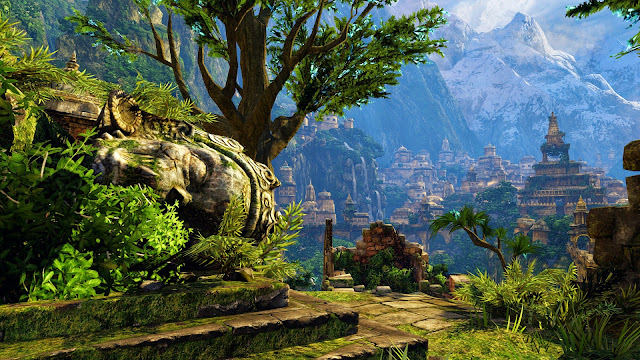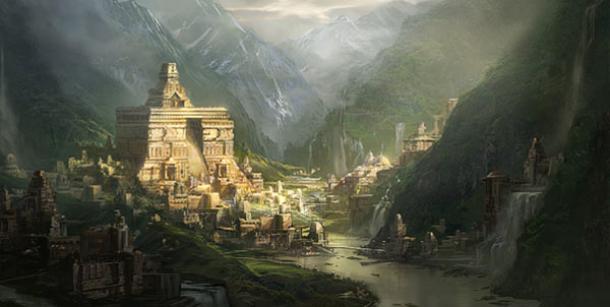Introduction
The legend of Shambhala—a mythical Himalayan kingdom promising peace, immortality, and spiritual awakening—continues to enchant adventurers, seekers, and curious minds across generations. Known as the “Forbidden Land” or “Land of the Living Gods,” Shambhala whispers of a paradise hidden among snowy peaks, untouched by time. In this 2025 update, we explore its mysteries, from ancient texts to modern fascination, as materialism clashes with a world hungry for meaning. Could Shambhala’s prophecy be unfolding in our lifetime? Whether you’re searching for “Shambhala Himalayan kingdom” or “hidden paradise Tibet,” dive into the timeless enigma that still captivates us today.
What is Shambhala?
Shambhala, from the Sanskrit for “place of peace” or “place of silence,” is a mythical utopia woven into ancient texts like the Kalachakra Tantra and the pre-Buddhist Zhang Zhung scriptures of western Tibet. Legends describe it as a land for the pure-hearted—a realm free from suffering, aging, or want, where love and wisdom reign. Today, Shambhala strikes a chord with those seeking mindfulness amid digital chaos. Picture it as the ultimate spiritual retreat, a Himalayan Shangri-La blending enlightenment and immortality. This “Shambhala mystery” bridges ancient lore with modern quests, drawing searches for “Tibetan mysticism” and “Himalayan legends.”
Introduction
The legend of Shambhala—a mythical Himalayan kingdom promising peace, immortality, and spiritual awakening—continues to enchant adventurers, seekers, and curious minds across generations. Known as the “Forbidden Land” or “Land of the Living Gods,” Shambhala whispers of a paradise hidden among snowy peaks, untouched by time. In this 2025 update, we explore its mysteries, from ancient texts to modern fascination, as materialism clashes with a world hungry for meaning. Could Shambhala’s prophecy be unfolding in our lifetime? Whether you’re searching for “Shambhala Himalayan kingdom” or “hidden paradise Tibet,” dive into the timeless enigma that still captivates us today.
What is Shambhala?
Shambhala, from the Sanskrit for “place of peace” or “place of silence,” is a mythical utopia woven into ancient texts like the Kalachakra Tantra and the pre-Buddhist Zhang Zhung scriptures of western Tibet. Legends describe it as a land for the pure-hearted—a realm free from suffering, aging, or want, where love and wisdom reign. Today, Shambhala strikes a chord with those seeking mindfulness amid digital chaos. Picture it as the ultimate spiritual retreat, a Himalayan Shangri-La blending enlightenment and immortality. This “Shambhala mystery” bridges ancient lore with modern quests, drawing searches for “Tibetan mysticism” and “Himalayan legends.”
The Prophecy of Shambhala
Shambhala holds a promise beyond its peaks. The Kalachakra Tantra foretells a time when materialism unites “barbarians” under a dark king. As their conquests peak, the mists will lift, revealing Shambhala. The 25th king, Rudra Cakrin, will lead an army to defeat these forces, ushering in a Golden Age. Some see echoes of this in our polarized, tech-driven era—how close are we to that tipping point, centuries from the prophesied 2424 AD? Is it a literal war or a symbolic battle against inner demons? “The real struggle is within,” notes Buddhist teacher Pema Chödrön, offering a timeless lens on this ancient vision. Seekers of “Shambhala prophecy” or “Kalachakra predictions” find its tension ever-relevant.
Where is Shambhala Hidden?
Shambhala’s location remains a riddle, fueling centuries of intrigue. Ancient Zhang Zhung texts suggest the Sutlej Valley in Himachal Pradesh, India, while Mongolian lore points to southern Siberia’s valleys. Altai tales call Mount Belukha its gateway—a claim whispered anew when climbers spotted eerie lights there in recent years. Modern Buddhist scholars favor the Dhauladhar Mountains near McLeod Ganj, a pilgrimage hub tied to the Dalai Lama. Some say a secret entrance hides in a remote Tibetan monastery, watched by Shambhala Guardians. Even with today’s satellite tech, no map marks this “hidden kingdom Tibet”—is it beyond the physical? Keywords like “Shambhala location” and “Himalayan secret valley” keep the quest alive.
The Prophecy of Shambhala
Shambhala holds a promise beyond its peaks. The Kalachakra Tantra foretells a time when materialism unites “barbarians” under a dark king. As their conquests peak, the mists will lift, revealing Shambhala. The 25th king, Rudra Cakrin, will lead an army to defeat these forces, ushering in a Golden Age. Some see echoes of this in our polarized, tech-driven era—how close are we to that tipping point, centuries from the prophesied 2424 AD? Is it a literal war or a symbolic battle against inner demons? “The real struggle is within,” notes Buddhist teacher Pema Chödrön, offering a timeless lens on this ancient vision. Seekers of “Shambhala prophecy” or “Kalachakra predictions” find its tension ever-relevant.
Where is Shambhala Hidden?
Shambhala’s location remains a riddle, fueling centuries of intrigue. Ancient Zhang Zhung texts suggest the Sutlej Valley in Himachal Pradesh, India, while Mongolian lore points to southern Siberia’s valleys. Altai tales call Mount Belukha its gateway—a claim whispered anew when climbers spotted eerie lights there in recent years. Modern Buddhist scholars favor the Dhauladhar Mountains near McLeod Ganj, a pilgrimage hub tied to the Dalai Lama. Some say a secret entrance hides in a remote Tibetan monastery, watched by Shambhala Guardians. Even with today’s satellite tech, no map marks this “hidden kingdom Tibet”—is it beyond the physical? Keywords like “Shambhala location” and “Himalayan secret valley” keep the quest alive.
Shambhala in Culture
Shambhala’s mystique ripples through global culture. James Hilton’s 1933 novel Lost Horizon gave us “Shangri-La,” cemented by Hollywood’s 1960 film. James Redfield’s The Secret of Shambhala tied it to spiritual journeys, while a recent Netflix documentary, Mysteries of the Himalayas, rekindled its allure. Hindu texts, like the Vishnu Purana, link it to Kalki’s birthplace, a thread explored in a popular Indian novel, The Kalki Code. From podcasts to viral X posts musing on its influence on mindfulness, Shambhala endures in “pop culture” and “Himalayan mythology,” captivating new generations.
Land of Immortals
Imagine Shambhala’s capital, Kalapa, where perfect and semi-perfect beings steer humanity’s evolution. Love rules here, injustice fades, and residents wield spiritual knowledge far beyond modern tech. Only the pure-hearted enter, living in eternal peace—immune to age or suffering. Could this “land of immortals” hint at secrets of longevity? Today, some biohackers see Shambhala as a mythic blueprint for anti-aging, merging ancient promise with cutting-edge dreams. Searches for “Shambhala immortality” or “Himalayan utopia” tap into this timeless allure.
Explorers and the Search
Shambhala has lured adventurers for ages. In the 1920s, Nicholas Roerich roamed the Gobi Desert and Altai Mountains, chasing its gates. The Nazis sent teams in the 1930s, driven by esoteric zeal—none prevailed. Edwin Bernbaum’s The Way to Shambhala suggests barriers rise as seekers near, a shield against “barbarians.” Even now, drones over Tibet find no trace, yet trekkers near Mount Kailash share tales on X: “Felt Shambhala’s energy—real or not, it’s there.” Searches for “Shambhala explorers” and “Himalayan quests” fuel the enduring hunt.
Conclusion
In an era of AI, climate shifts, and spiritual yearning, Shambhala’s pull isn’t just its hidden peaks—it’s the peace and immortality it offers, a beacon amid chaos. Is it a Himalayan haven or a state of mind? Perhaps both, linking this world to one beyond. From ancient prophecies to modern musings, Shambhala remains a symbol of hope. Have you felt its call? Share your thoughts below—whether you’re pondering the “Shambhala mystery” or dreaming of a Himalayan escape, the journey starts here.









1 Comments
Let us hope and pray that we may also join the Shambhala force in the future...
ReplyDelete